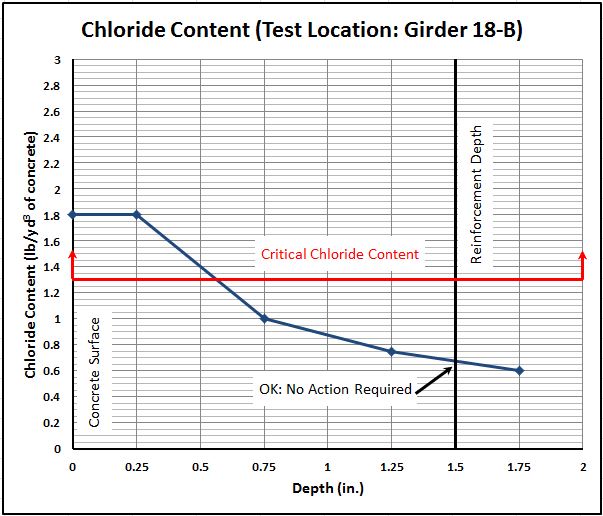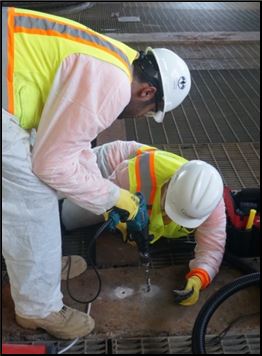Chlorides precipitate and exacerbate corrosion of reinforcement in concrete structures. Carrasquillo Associates (CA) can measure the chloride content of hardened concrete to determine the level of chloride ingress. Typically, a chloride profile is generated for the concrete in question by measuring the chloride content at known increments from the surface of the concrete to just below the depth of the reinforcement, as shown in Figure 1. Using this profile, the amount and depth of chloride penetration can be determined. When the chloride content at the level of the reinforcement exceeds a threshold value, corrosion is initiated. However, deterioration of the concrete is not immediately noticeable. Significant deterioration will not be visible until the chloride content reaches much higher levels. Therefore, to prevent significant damage to the structure, early detection of excess chlorides and prevention of future ingress is key. Chloride content testing is often incorporated into maintenance and remediation programs by savvy facility owners.
CA prefers to use a field test kit rather than a laboratory test to measure the chloride content of hardened concrete. Conducting the testing using the field test kit involves time and cost savings to the client. The field test involves obtaining a sample of concrete powder, as shown in Figure 2, and mixing an accurately weighed sample with a known volume of a standard acidic solution. When done in the field, test results can be obtained immediately, but if time permits, the mixture can be allowed to sit overnight for optimal results. After mixing the sample and solution, the chloride ions react with the acid in the form of an electrochemical reaction. When the test is conducted, an integral electrode and temperature sensor is inserted into the solution to measure the voltage generated by the reaction. This voltage is converted into chloride content. The system is regularly calibrated using specially prepared calibration liquids.


